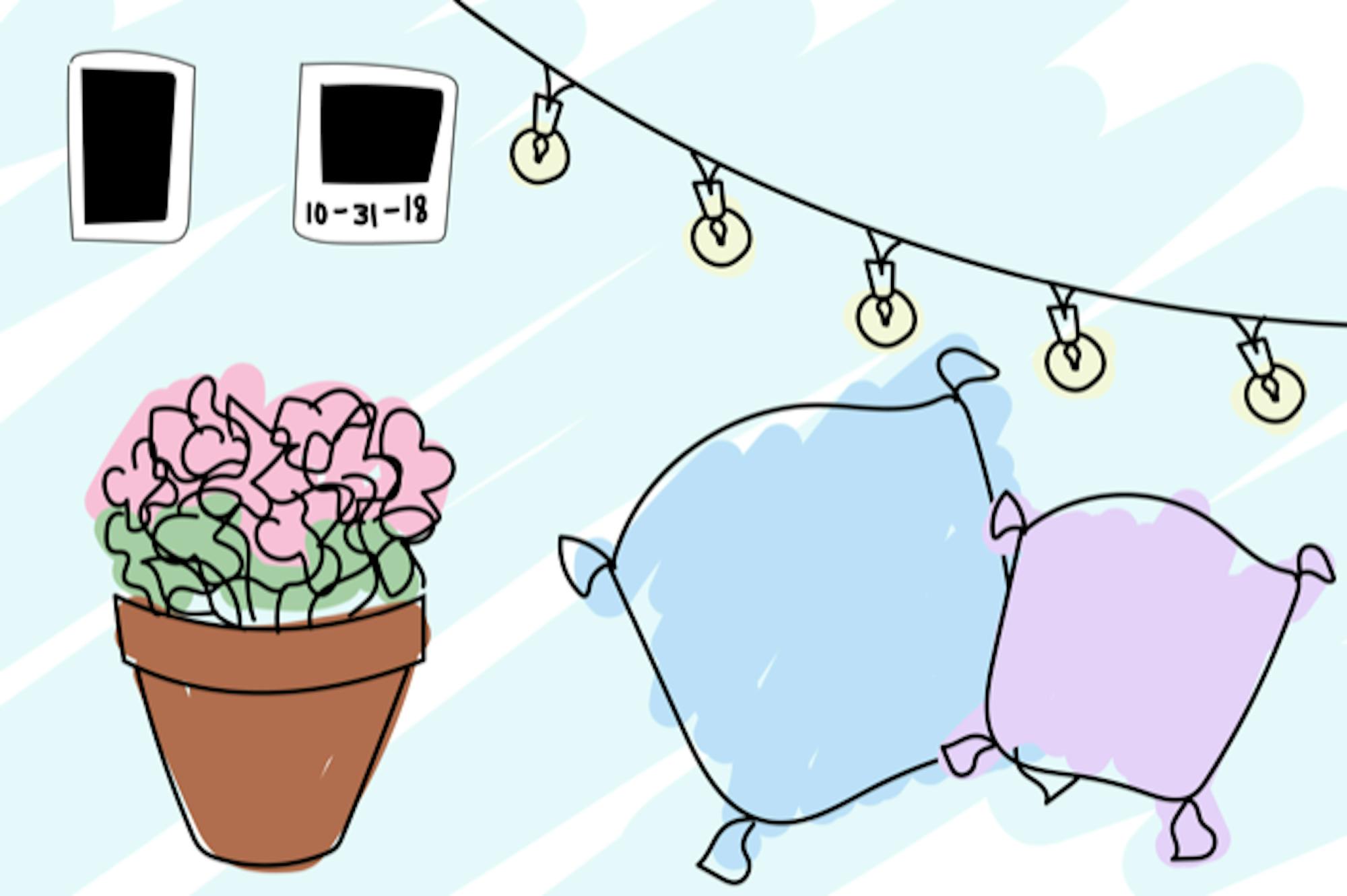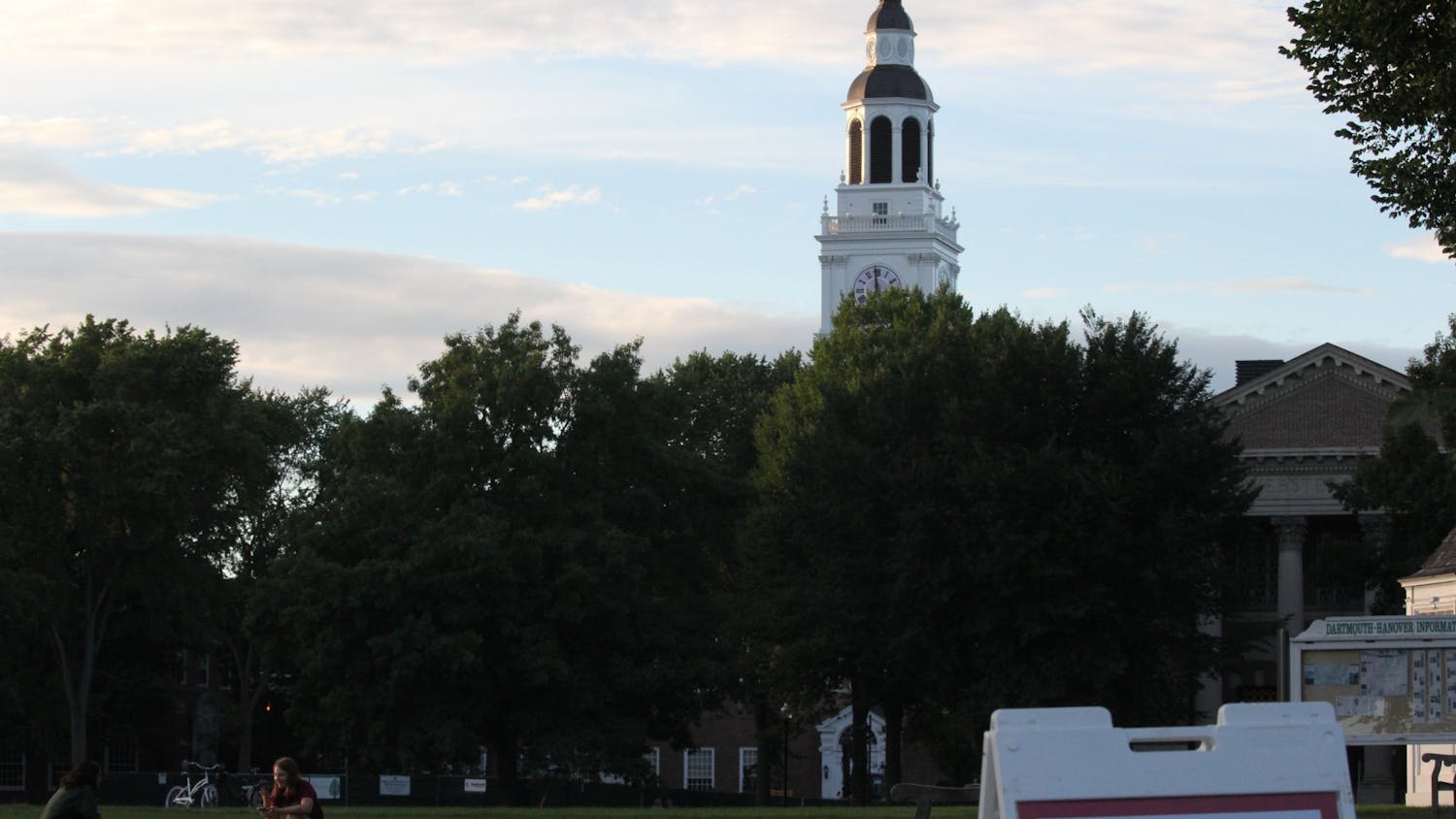This article is featured in the 2020 Fall special issue.
The prospect of living in a dorm is, for many new students, one of the most foundational parts of college life. Somewhere between the buzzing excitement of move-in day and the bittersweet last glance through the door before leaving on break, many develop soft spots for their little rooms. When walking back to the dorms after a long night of studying in the library, some students even find themselves unthinkingly saying that they’re “heading home.”
So what makes your dorm, in all its boxy glory, a home? Is it the fact that the art on the walls is curated specially and solely for you? Is it because you can always rely on having some peace and quiet within its four walls? Is it because your roommate walks through the door and shouts “Honey, I’m home!” like a 1950s businessman returning from the office? Perhaps your dorm is home simply because it is yours. For many students living independently for the first time in college, a dorm room represents newfound agency; it's a place where you can live according to your own schedule, decorate in your own style and invite people in on your own whim.
This fall’s hybrid term has complicated the dorm room’s role in student life. Because of the long hours students spend in their rooms taking online classes, the reduced frequency of activities held elsewhere on campus and the small selection of non-dorm study spaces, for many, rooms now feel more like symbols of confinement than independence.
And yet with limited opportunity to meet people through classes and clubs, in-person interaction in residence halls is more important than ever for students warding off feelings of isolation. This fall, among the complexities of quarantine and remote learning, Dartmouth students are reconceptualizing the construction of home in their residence halls.
When moving in for fall term, students had a tall order to fill: bringing enough stuff to make the dorms comfortable during a long stay in quarantine, but not so much stuff that the room couldn’t be packed up within 24 hours — in September, the College advised students to bring only what they could carry in case of a campus evacuation. Students had to be especially mindful in deciding what to pack.
“The gym was closed when we moved in, so I brought a yoga mat and some weights, which I thought would be really helpful for having things to do in my room,” Callie Moody ’24 said. “I tried to make sure that I had enough storage, so that everything could be packed away and I could have more open space. I also focused on making sure I had a comfortable bed, because I knew I’d be spending a lot more time than usual studying on it.”
In the process of setting up their dorm rooms, students balanced function with fashion. Decorations that economize space liven up dorm rooms this term: tapestries, quilts and flags, which can splash enormous swaths of wall with color and fold up small for transport, are the season’s hottest interior design trend. Fairy lights adorn desks and windowsills across campus, providing rooms with good lighting for late-night studying and a soft glow for maximum coziness. Students have also decked the walls with photographs of friends and hometowns to make their dorms as familiar and comforting as home.
Kendra Elk Looks Back ’24 mastered the art of packing decorations, and even with limited luggage space, infused her dorm room with zest and flair.
“I brought a lot of decorations; my walls are very full,” Elk Looks Back said. “I made an Instagram post of my dorm decorations, and everyone thought I must have brought four suitcases, but actually it was just little things that I brought. I rolled up three posters and I brought five flags, which took up minimal space.”
For Elk Looks Back, making her room look nice is an important part of making a space comfortable to live in.
“It’s going to be my home for 10 weeks. I want it to look pretty,” Elk Looks Back said.
Advaita Chaudhari ’24 got particularly crafty with her adornments — the New York City skyline, rendered on the wall around Chaudhari’s bed in tall strips of black tape, takes up an entire corner of her room. Both the skyline and the color palette of Chaudhari’s dorm are echoes of her bedroom at home in Texas.
“I have a specific style that I like to work with, so I tried to recreate that here. I was really excited to decorate my dorm, because my room is such a big reflection of my mental health,” Chaudhari said.
Still, despite Chaudhari’s success in making her dorm a stylish space, some design challenges were too big to surmount with such little packing space.
“I really wanted a rug, but I couldn’t transport [it],” Chaudhari said. “I’m very much a rug person, and this green Dartmouth carpet makes me so angry.”
Peyton Bond ’24 has also worked hard to curate a space that holds all the comforts of home. Her walls are covered in clusters of photos from Bermuda, where she lived before coming to Dartmouth. Images of her friends and favorite places ornament pillows and mugs, and Bond’s own artwork is displayed above her bed. Above her desk, Bond hangs the handwritten notes she and her roommate write each morning — a new ritual for their new space.
“I really thought we were going to get evacuated after two weeks, so I put stuff up slowly,” Bond said. “In a normal year, I don’t know that I would have thought to bring so many photos. I really wanted to bring something that I knew would make me happy and remind me of home.”
For many, a home is somewhere filled with friends and loved ones. Across campus, undergraduate advisors are attempting to bridge the gap between isolated students by creating space for residents to come together and find a supportive base in the people they live with.
Elliot Ng ’21, who is in his second year as an undergraduate advisor, shared his thoughts on floor bonding this fall.
“Right now, the policy is that you can only have people in your room if they’re from the same residence hall as you. You have to be six feet apart and wearing masks, but there’s still this opportunity to interact with people in a more personal setting,” Ng said. “I think floors have become a lot closer. People spend a lot of time in their dorms now, so you bump into your floormates more frequently. It’s not uncommon at all to see people eating together outside, or spread out watching movies in the basement.”
The vibrant scene on Ng’s floor is reflected in the dorm’s physical structure as well. Recently, residents have contributed their own personal flair to communal hallways.
“People have been decorating their doors! I’ve seen some with really nice pictures, some with lights — people have been using the outside of their doors to show their personality, since so much of what you see walking around in the residence hall is the floor’s doors,” Ng said. “We might actually have a door decorating competition.”
Jenique Richards ’22, another UGA, is also working hard to keep floor bonding opportunities frequent and fun. For Richards, floor bonding is crucial for building a supportive community not just among her on-campus residents, but among her virtual freshmen residents living off campus.
“I couldn’t imagine being a remote first-year during this term, so I’m trying to do a lot for them and check in with how they’re doing adjusting to college,” Richards said. “I’m working on creating some virtual programming right now. I’m planning a watch party for both my virtual and on-campus residents, and we’re also going to have a game night. I think I might also try to do something just for my remote residents, like a movie night, to give them a space to hang out.”
Dartmouth, a place that so many students think of as home, looks different this term. To many, campus might even seem unrecognizable. Dartmouth students, however, are not letting the wackiness of this year diminish their sense of place. From the smallest poster on the wall to the fanciest door in the hall, students are bringing their lives back to the Dartmouth community in boundlessly creative ways.




